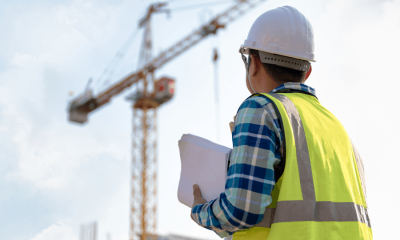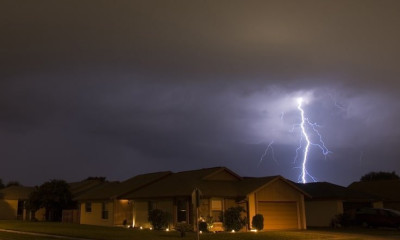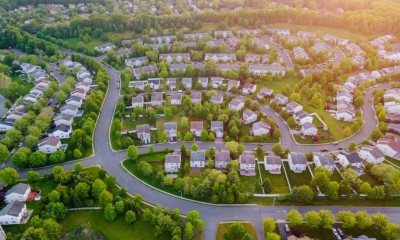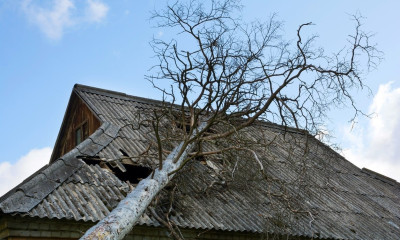Weathering the Storm – Preparing for a Major Weather Event
Climate change has brought wildly unpredictable weather to locales that are not accustomed handling such occurrences. The recent snowstorms in the South are just one example of the devastation that can ensue when people and local governments are not prepared for the fallout of a major weather event. Even when a region is well-versed on the nature of the storm, the magnitude can be far greater than predicted and its citizens are blindsided in the aftermath.
This type of situation is much easier to navigate when there is a plan in place. Preparing for all severe weather possibilities is the best way to stay ahead of any storm. Find out what actions should be taken in advance and what to do if your home or business is damaged due to a weather disaster.
Severe Thunderstorms and Tornadoes
A thunderstorm is about as common as it gets in terms of weather events. A thunderstorm is defined as severe when it contains one or more of the following: hail larger than one inch, winds gusting in excess of 57.5 mph, or a tornado. When warm, moist air meets cold, dry air, a storm cloud forms and energy is released in the form of thunder and lightning. Most often, there is nothing to fear from a passing thunderstorm and some people even enjoy the experience. However, according to the National Severe Storms Library, severe thunderstorms may pose a serious threat due to instances of flash flooding, lightning strikes, and straight-line winds.
How to Prepare for a Severe Storm
If there is a severe thunderstorm forecasted in your area, it is best to:
- Secure any outdoor furniture or important possessions
- Seek shelter immediately
- If you find yourself in a vehicle during this type of event, the safest option is to remain inside your car. If you can pull over safely in a sheltered area, do so immediately.
Though the idea of a severe storm is generally not concerning, the reality is that any one of its elements can cause heavy damage or even loss of life. Flash flooding claims more lives annually than tornadoes, hurricanes, and lightning. Storms can produce large hail that can crack windshields and dent vehicles. Lightning during a storm can cause unexpected fires, and straight-line winds are known for tearing off roofs and ripping through fencing. Not only is it a nuisance to have to repair when the storm ends, flying debris is dangerous.
Speaking of strong winds, tornadoes can spur up to 300 mph winds, shredding homes, large buildings, vehicles, and landforms. When a thunderstorm contains a certain combination of spinning winds in the air and near the ground, rotation forms to cause a tornado. Tornadoes can create a devastating path of destruction, and while its path can sometimes be narrow, it is intense.
Microbursts
A microburst is a phenomenon like no other. Located within a thunderstorm, it is a localized column of sinking air with winds higher than 100 mph. This downdraft of air causes extensive damage at the surface. Because it is equivalent to the force of an EF-1 tornado, microburst warnings should always be taken seriously. They can be life-threatening.
Like the more familiar tornadoes, microbursts can level trees and buildings. Still, they are more difficult to predict than a tornado because microbursts are short-lived and can appear without warning. Knowing about this microburst potential during a severe thunderstorm is another reason to be prepared for inclement weather.
Winter Storms and Nor’easters
The longest season of the year is surely winter, or at least it feels that way. With its lake effect snow, nor’easters and ice storms, at times winter seems never-ending. Winter storms can cause hazardous traveling conditions, downed power lines and extensive property damage including but not limited to flooded basements, ice dams, flooding, and collapsed roofs.
How to Prepare for a Winter Storm
- Stock your home, commercial properties, and vehicles with snow removal tools like shovels and snow blowers.
- Keep an emergency kit in your home and vehicle. Keep items such as water, non-perishable foods, medications, blankets, cell phone chargers, and extra clothes handy.
- Purchase ice melt or salt to mitigate falling or slipping on surfaces such as driveways and outdoor walkways.
Recovering from a Natural Disaster
The clean up after a natural disaster can be as surreal as the event itself. Here are basic steps to take to help recover:
- Ensure the safety of yourself and your family.
- Outfit yourself in safety gear like hard hats, gloves, N95 masks, protective clothing, and shoes.
- Use extreme caution while using power tools or encountering downed limbs or power lines. Never approach a downed power line.
- Document any damage to your property by taking photographs and videos for supporting documentation towards your insurance claim.
- Begin mitigating damage to your property by eliminating water or other debris, if you can safely do so.
- Contact your insurance company.
- Hire a licensed public adjuster to advocate for you and help you receive a correct and just insurance claim settlement.
A public adjuster works for you, the policyholder — not the insurance company. They will assist you by easing the stress of handling your property insurance claim. Our licensed public adjusters at Adjusters International/Basloe, Levin & Cuccaro (AI/BLC) prepare, estimate, negotiate, and settle your property insurance claim and help you get back to normalcy. Insurance claims can be stressful and time consuming and you do not have to go through the process alone. Hire an expert such as ours who has the experience necessary to get you the settlement you deserve.
Get in touch with one of AI/BLC’s licensed public adjusters and approach the situation with support and confidence. Learn more by visiting our website, and do not hesitate to reach out.













